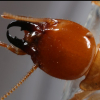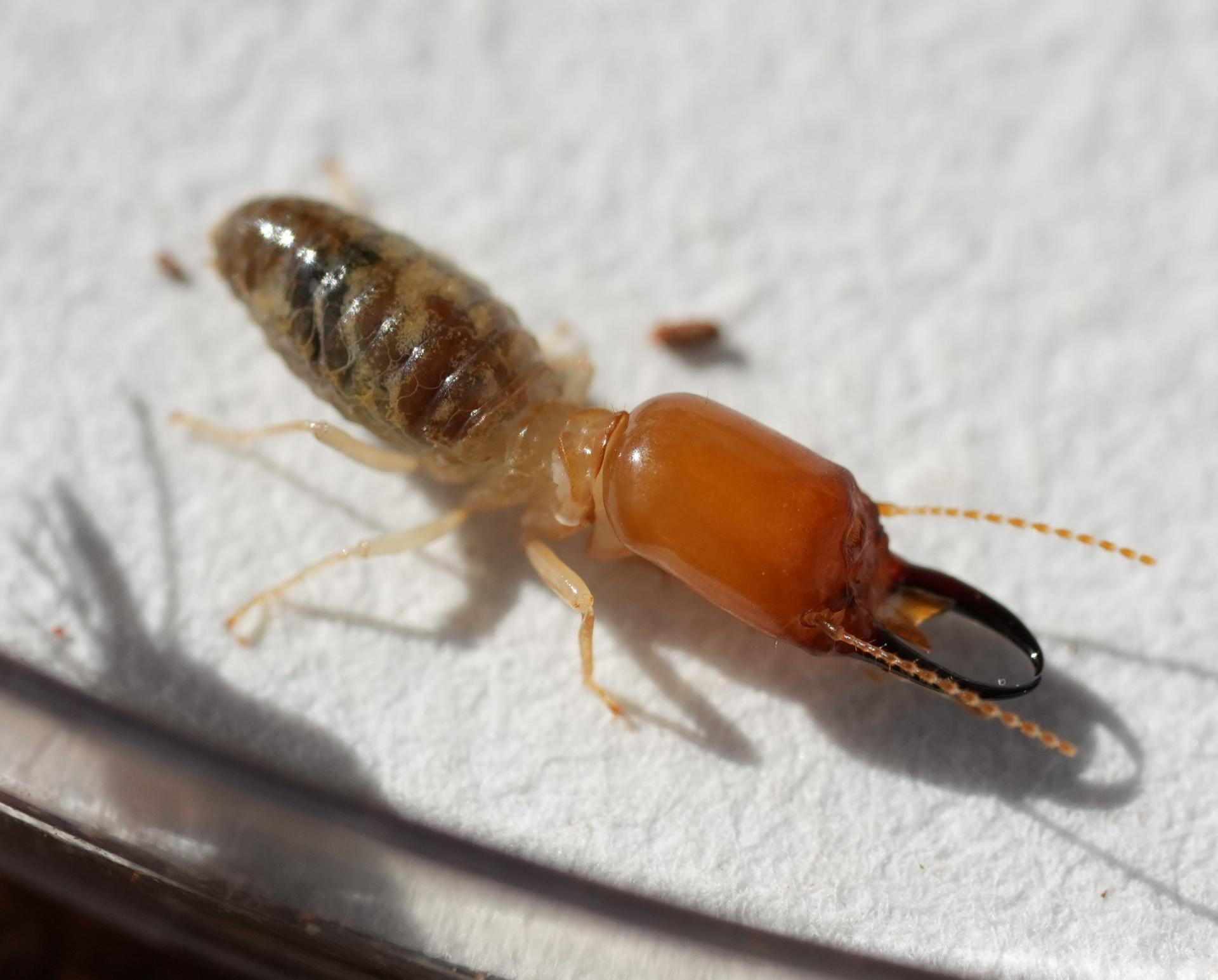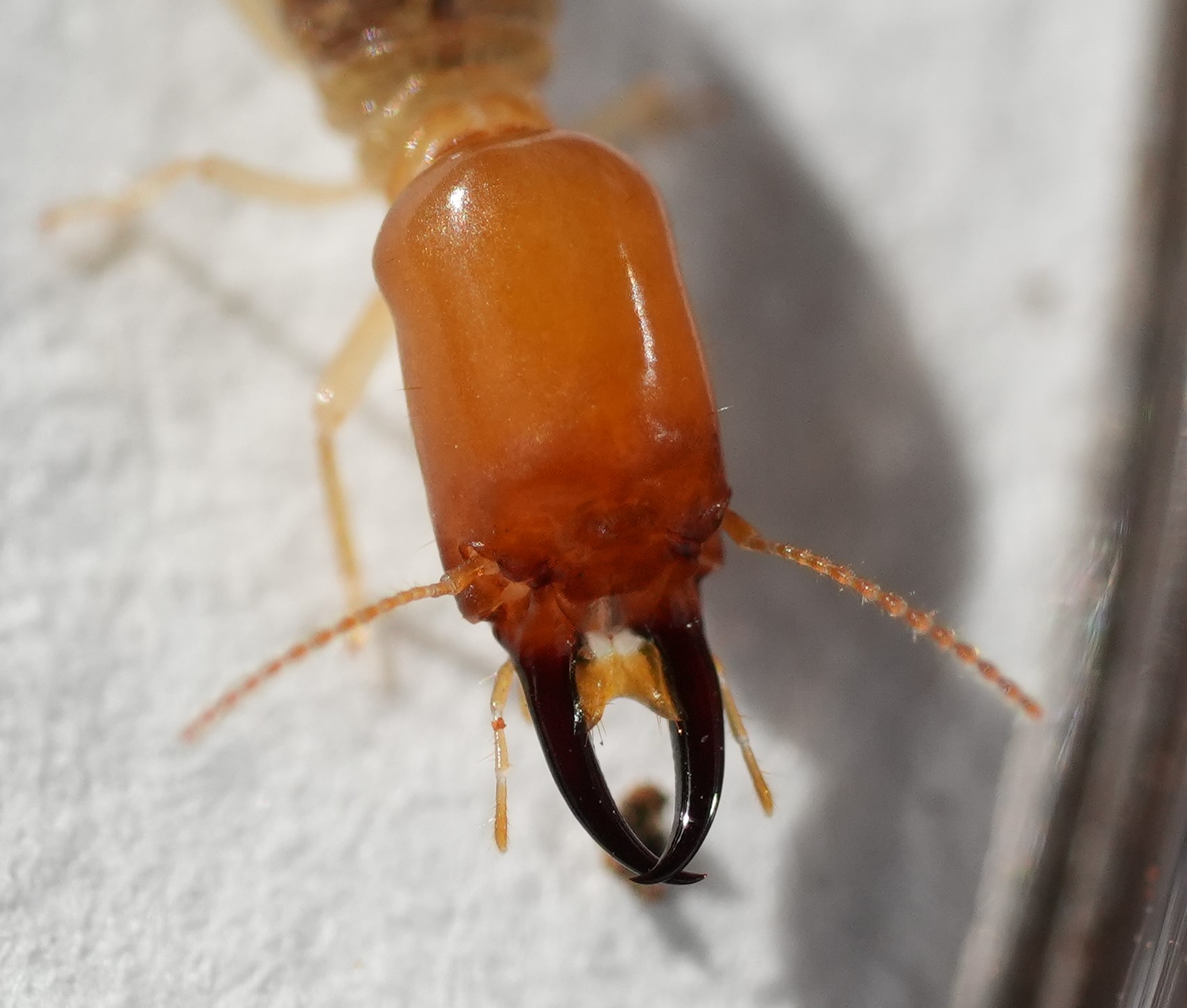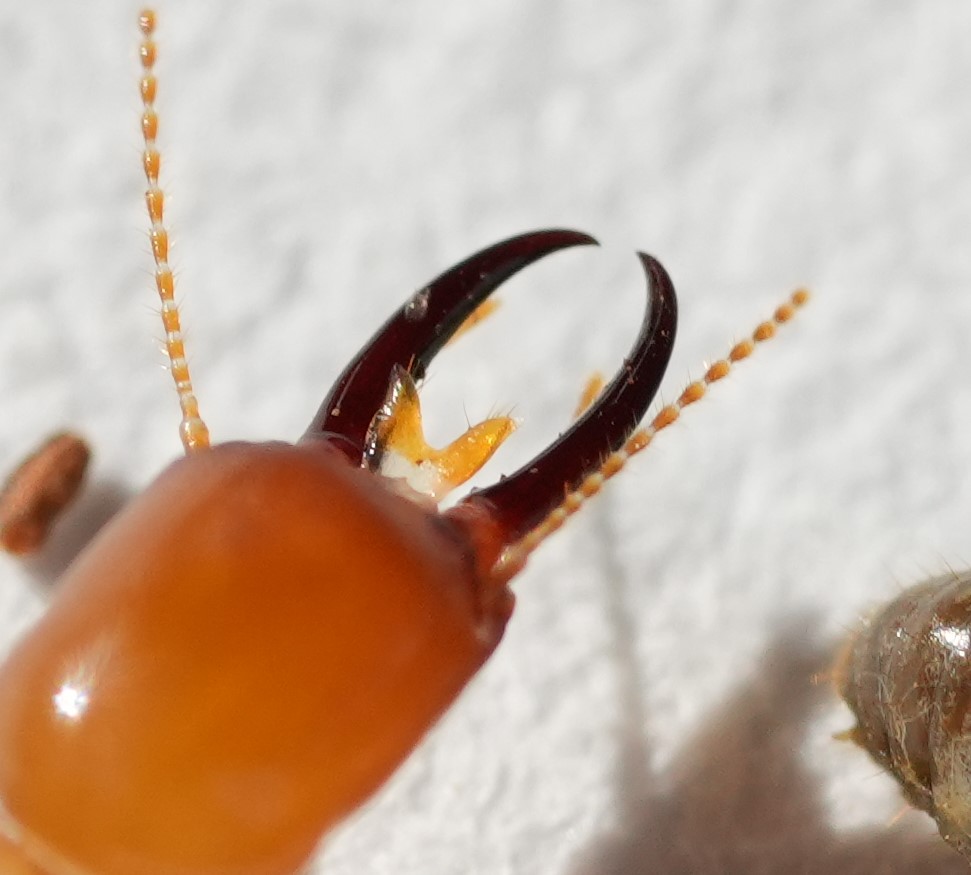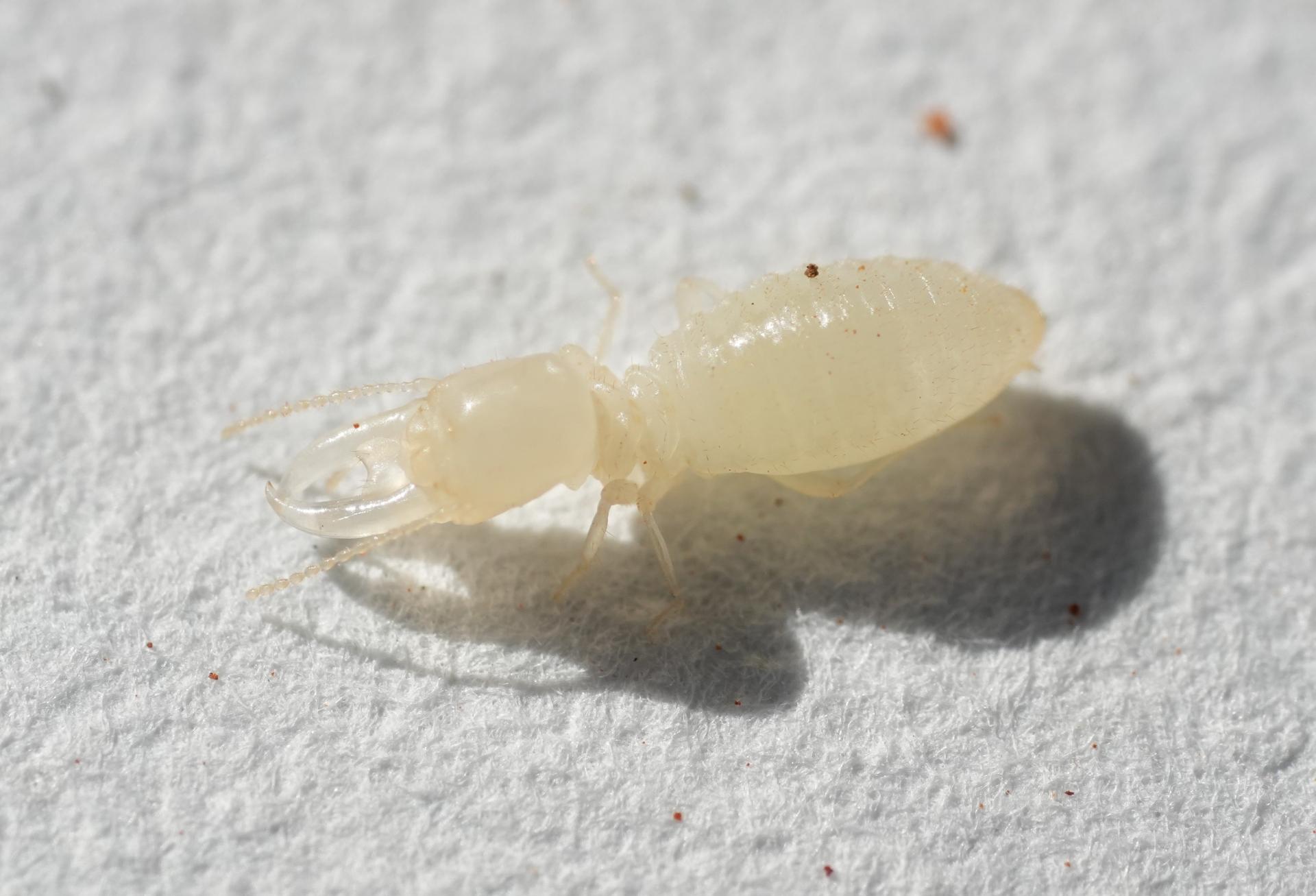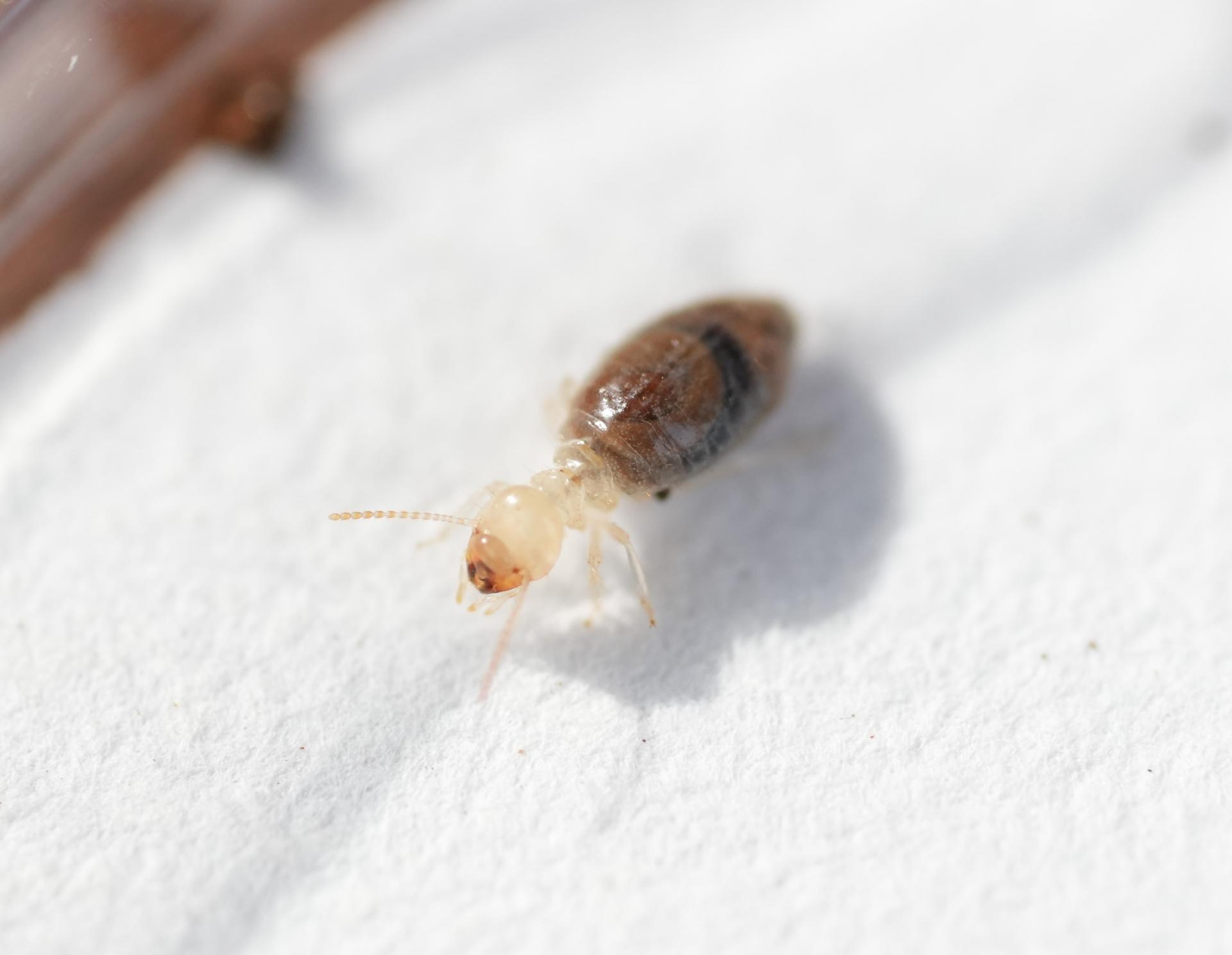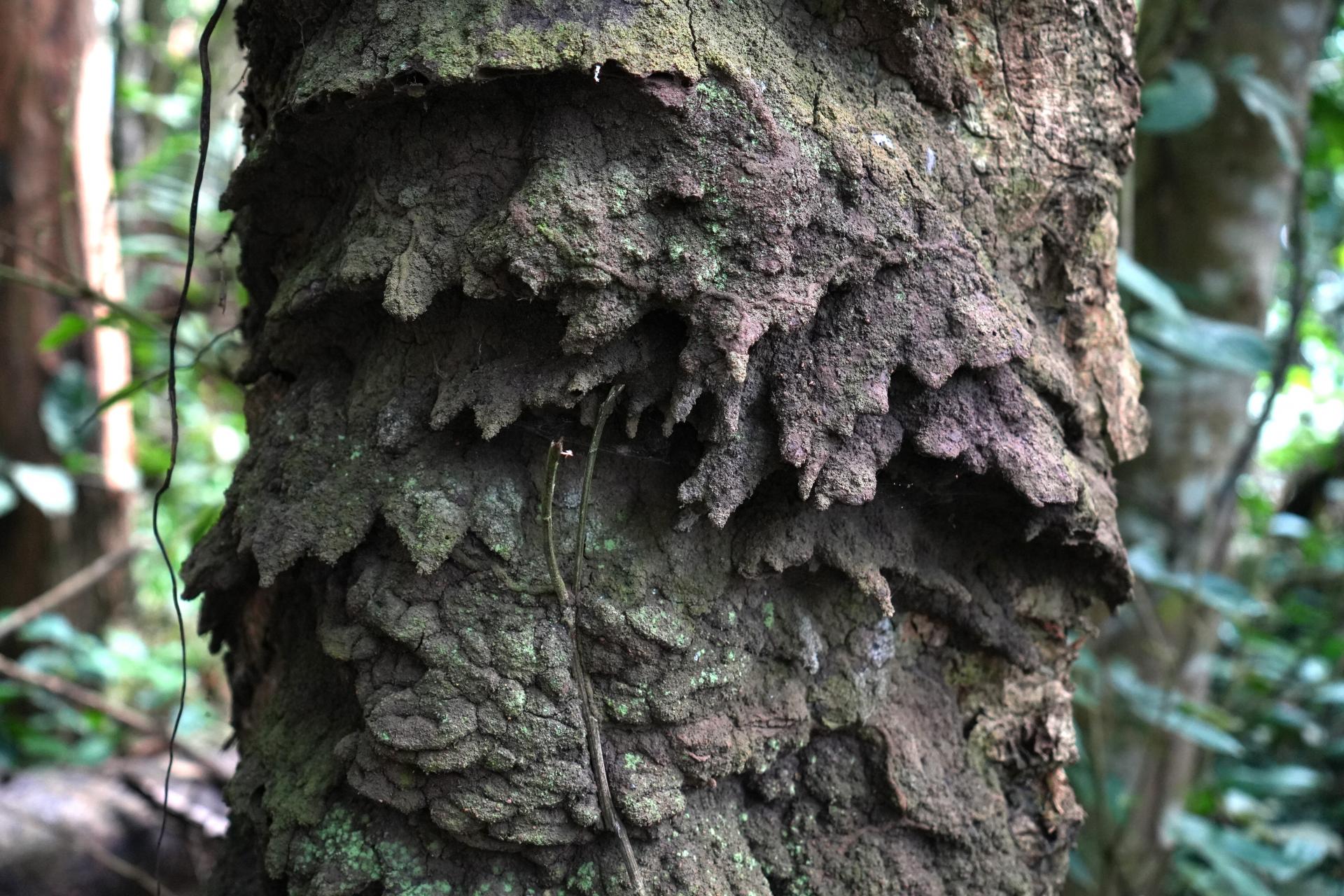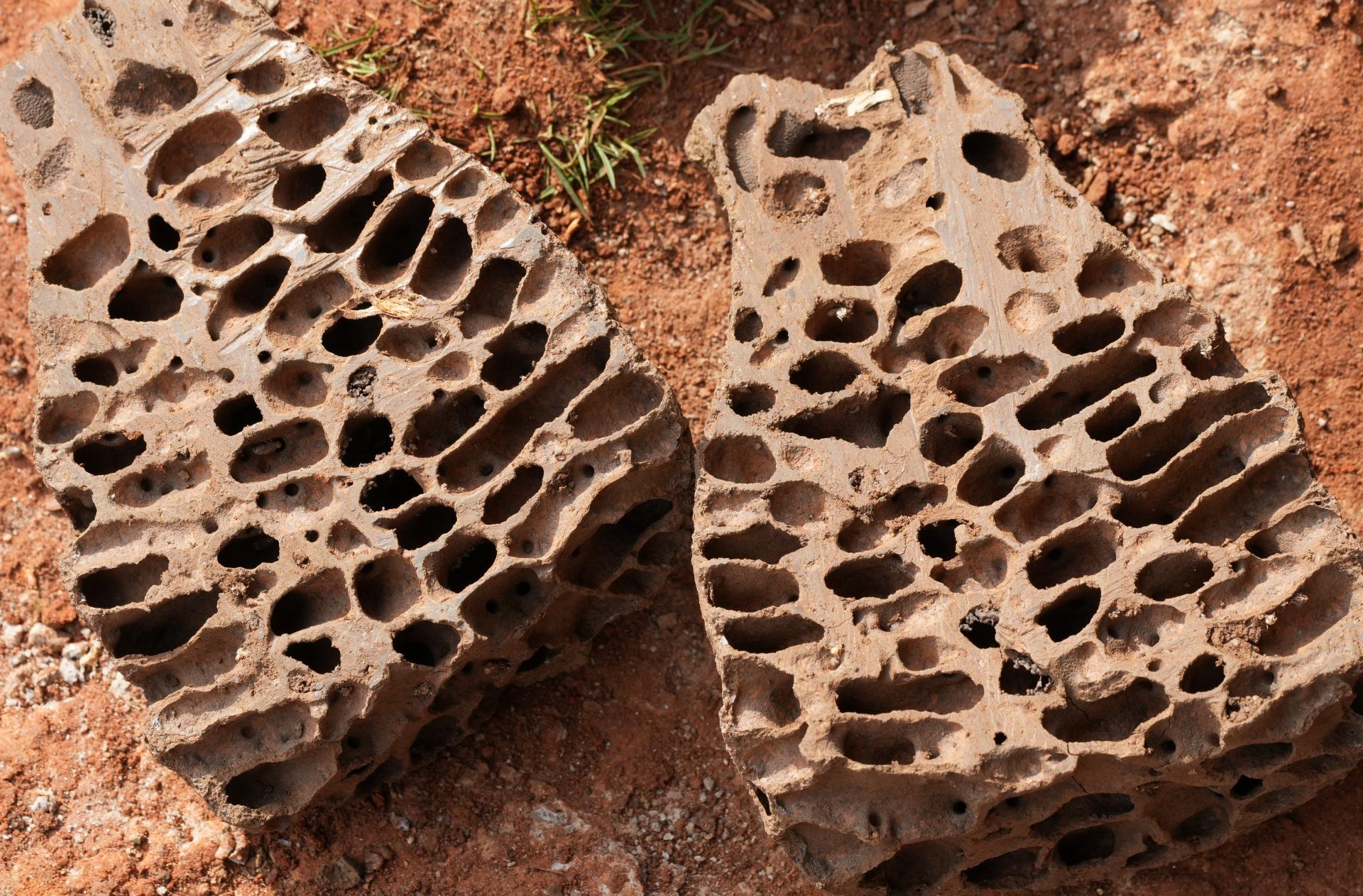Hello forum!
Today i'll share with you a few pics i shot in Camerun last month of Cubitermes, an interesting genus of sub-Saharian, soil-feeding, non-pest termites that were very abundant in the forest i visited and whose peculiar mounds were pretty much everywhere.
A soldier of Cubitermes. These quite large (13-14 mm approx) soldiers sport a mixed defence, being equipped with both a pair of sabre-shaped cutting-type mandibles and a defensive fluid produced inside the head in the frontal gland and exuded into an enemy's wound from a small pore on the front on the head, the fontanelle (rather well visible in the pic).
Close up of the head and mandibles... yep, these soldiers could indeed make your finger bleed!
Note how just above the mouth and in between the mandibles there is a sclerotized flap, the labrum. This part can have very different shapes and sizes among termite soldiers, in Cubitermes it's bilobed, as you can see here.
White on white ain't the best solution in photography, but anyway here's a presoldier. This is a short (approx 15 days) purely transitional stage present in all soldiered termites that allow a larva/worker (depending on the species) to gap the internal and external morphological changes necessary to morph into a soldier, and the closest thing hemimetabolous insects have to a pupal stage. They are mobile but of no use to the colony and their "job" is simply to wait to become soldiers.
A worker of Cubitermes; its guts filled of the soil this genus feed upon. Despite not being adapted to defence in any way, they can still bite and be moderately succesful when clamping down en masse.
A nest of Cubitermes built on the side of a tree and sporting the typical multitude of rain-deflecting lobes. Nest of this species can either be leaning on support like this one or built free-standing, in which case they truly look like giant mushrooms with a variable number of hats.
Part of a young free-standing Cubitermes mound sawn in two to show the internal architecture. All chambers are connected by narrow passages that the soldier can easily defend in the case of a breach.
Well, that's all for this post, see you next time!


